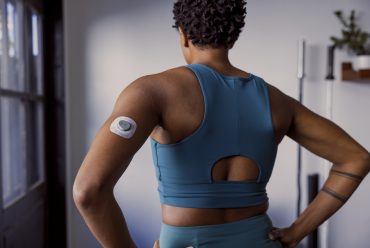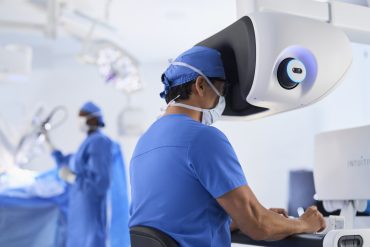
Dexcom Launches First Over-the-Counter AI-Powered Glucose Monitor Stelo
6 minute read

First AI-Powered Glucose Monitor Available Without Prescription Brings Continuous Health Tracking to Wider Audience
Three Key Facts
- The Stelo by Dexcom achieves 93% accuracy compared to traditional finger-stick monitors, maintaining precision within a 20% margin despite a natural 9-minute lag time between interstitial fluid and blood glucose readings
- The global continuous glucose monitoring market is projected to reach up to $32.97 billion by 2031, growing at compound annual rates between 7.2% and 13% from current valuations of $5.33-$12.63 billion
- At $99 for two 30-day sensors, the Stelo represents the first over-the-counter AI-powered glucose monitor, expanding access beyond traditional diabetes patients to include prediabetics and health-conscious consumers
Introduction
Healthcare technology reaches a significant milestone with the launch of Stelo by Dexcom, marking the first over-the-counter continuous glucose monitor to integrate artificial intelligence for metabolic health management. This development transforms glucose monitoring from a reactive medical necessity into a proactive wellness tool accessible to millions of Americans.
The device represents a fundamental shift in how individuals approach metabolic health monitoring. Traditional finger-stick testing gives way to continuous, painless tracking that provides comprehensive lifestyle insights through smartphone integration and AI-powered analysis.
Key Developments
The Stelo system employs advanced sensor technology that monitors glucose levels in interstitial fluid through a small filament placed under the skin. Users describe the application process as comparable to an ear piercing rather than a medical injection, significantly reducing the barrier to adoption.
The device operates continuously for 10-14 days per sensor, transmitting data to a smartphone application that leverages Google Cloud’s Vertex AI platform. Users log food intake, stress levels, and exercise activities over 15-day periods, enabling the system to generate personalized weekly insights about glucose patterns and lifestyle correlations.
Real-world testing demonstrates the system’s practical value through spike alerts that reduce the need for constant glucose checking. The application reveals how specific activities like gaming or driving can elevate glucose levels, while even brief walking sessions help stabilize readings through improved cellular glucose utilization.
Market Impact
The continuous glucose monitoring sector experiences unprecedented expansion, with major players including Dexcom, Abbott, and Medtronic driving innovation alongside emerging startups focused on AI-enhanced solutions. North America maintains a 38% market share, while Asia-Pacific emerges as the fastest-growing region globally.
Pricing competition intensifies as over-the-counter options proliferate, creating downward pressure on device costs and democratizing access to advanced monitoring technology. Insurance providers expand reimbursement coverage for CGMs, while regulatory agencies accelerate approval processes for next-generation diabetes devices.
The AI-powered diabetes management tools segment specifically grows from $0.62 billion in 2024 to $0.8 billion in 2025, reflecting increasing integration of artificial intelligence across healthcare applications. This growth extends the potential customer base beyond insulin-dependent diabetics to include type 2 diabetes patients and health-conscious non-diabetics.
Strategic Insights
Product development priorities center on enhancing user comfort, extending device longevity, and achieving seamless integration with mobile and wearable platforms. Advanced sensor materials reduce invasiveness while refined optical and electronic technologies deliver more reliable real-time data transmission.
Companies leverage AI algorithms to predict glucose trends, automate treatment adjustments, and identify metabolic subtypes with clinical-grade accuracy. This technological integration improves patient outcomes while expanding market opportunities beyond traditional diabetes management applications.
The convergence of AI, wearables, and digital health platforms reshapes diabetes care through real-time data sharing with healthcare providers and enhanced telemedicine support. This integration reduces the frequency of in-person medical visits while maintaining comprehensive patient monitoring and care coordination.
Expert Opinions and Data
Clinical evaluation reveals important considerations for accuracy expectations in continuous glucose monitoring. According ZDNet, real-world testing of the Stelo system over two weeks demonstrated 93% accuracy when compared to traditional finger-stick monitors, with most discrepancies occurring after carbohydrate-heavy meal consumption.
Industry standards for CGM accuracy require mean absolute relative difference (MARD) values between 3.3-5.3% for devices to achieve 100% accuracy ratings. Current interstitial fluid monitoring technology naturally includes a median lag time of nine minutes compared to direct blood glucose measurements, affecting real-time precision but maintaining clinical utility.
Healthcare professionals emphasize the importance of continuous glucose monitoring for managing diabetes complications including diabetic ketoacidosis and hypoglycemia. The technology provides valuable insights for individuals without diabetes by identifying prediabetes conditions, metabolic syndrome indicators, and insulin resistance patterns that traditional testing methods might miss.
Early user feedback identifies areas for improvement, including sensor reliability issues and the need for enhanced AI capabilities. Users suggest expanding functionality to include nutritional information recommendations and more frequent personalized insights based on individual glucose response patterns.
Conclusion
The introduction of AI-powered over-the-counter glucose monitoring technology represents a significant advancement in accessible healthcare technology. The Stelo system demonstrates how continuous monitoring combined with artificial intelligence can transform metabolic health management from reactive treatment to proactive wellness optimization.
Market dynamics indicate sustained growth driven by technological innovation, regulatory support, and expanding insurance coverage. The combination of improved accuracy, user convenience, and competitive pricing positions continuous glucose monitoring as a mainstream health management tool rather than a specialized medical device.
Success in this evolving market depends on addressing persistent challenges including affordability, data privacy protection, and ensuring equitable access across diverse populations. Companies that effectively balance technological advancement with practical usability considerations will establish leadership positions in this expanding healthcare technology sector.








